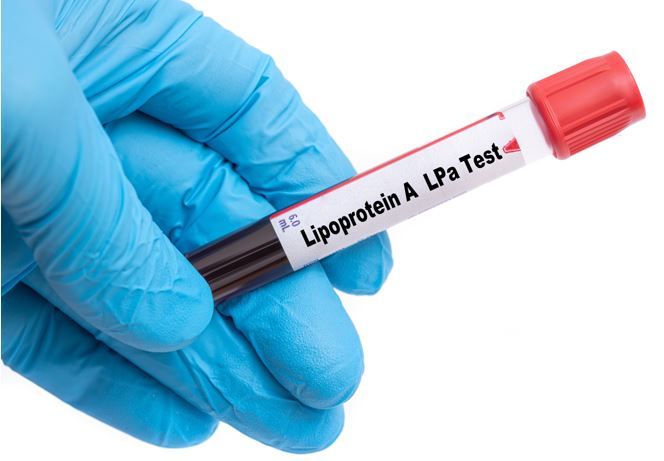- Clinical Technology
- Adult Immunization
- Hepatology
- Pediatric Immunization
- Screening
- Psychiatry
- Allergy
- Women's Health
- Cardiology
- Pediatrics
- Dermatology
- Endocrinology
- Pain Management
- Gastroenterology
- Infectious Disease
- Obesity Medicine
- Rheumatology
- Nephrology
- Neurology
- Pulmonology
Elevated Lp(a) Levels Found Independent Predictors of Recurrent CHD in Australian Cohort
In adults aged ≥60 years, elevated levels of lipoprotein(a) (Lp(a)) were an independent and significant predictor of recurrent coronary heart disease (CHD), according to findings from Australian investigators published online June 12 in Current Medical Research and Opinion.1
Specifically, results of the longitudinal study of older adults with prevalent CHD showed that Lp(a) levels in the top 20% of the population distribution (ie, >355 mg/L) compared with levels in the lowest 20% (ie, <50 mg/L) predicted a 53% excess risk of a future CHD event over the follow-up period of 16 years; the predictive power was independent of other CHD risk factors, according to the study.
©luchschenF/Adobe Stock

“This finding adds to growing evidence of a relationship between increased Lp(a) and the risk of recurrent CHD,” Leon Simons, MD, lead author and an associate professor from the School of Clinical Medicine at the University of New South Wales Sydney, said in a statement.2 “It is well-established that people who have already experienced CHD are at very high risk of another event. Our new results indicate that new therapeutics in development that aim to reduce elevated Lp(a) might help prevent recurrent disease. However, the potential clinical benefit of therapy to reduce elevated Lp(a) is yet to be confirmed.”2
Simons and coauthor Judith Simons, of St Vincent’s Hospital in Sydney, point out that the majority of existing research that suggests an association between high Lp(a) levels and development of CHD has evaluated the risk of a first CHD event. In fact, the investigators’ current analysis draws on data collected for an earlier study in the same cohort that found older adults with Lp(a) levels ≥276 mg/L were at 46% greater risk of an initial CHD event compared with those with Lp(a) values <51 mg/L.1
The original Dubbo study (1988-1989) reported on Lp(a) and risk of incident CHD among 2198 Australians aged ≥60 years who were free of CHD at baseline. The cohort for the current analysis was comprised of the 607 potential participants excluded from the Dubbo study for prevalent CHD. In this subgroup, investigators assessed whether elevated Lp(a) is predictive of a second or additional CHD event over 16 years.
Prevalent CHD was defined by the researchers as previous myocardial infarction and/or angina either reported on a patient questionnaire or identified by electrocardiogram (ECG) changes during baseline examination of all Dubbo participants. Incident CHD events over the study period were determined via examination of hospitalization and death records and by mail surveys conducted every 2 years.
The 607-participant cohort was evenly divided between men (307) and women (300) and had an average age of 71 years.
FINDINGS
The researchers identified 399 CHD incidents over the 16 years of follow-up. They reported that median levels of Lp(a) among participants with a recurrent CHD event were “marginally higher” than among those who did not experience an event (130 mg/L and 105 mg/L, respectively) a difference of “borderline significance (P<.07)”, they wrote.
Further analysis found that 26% of participants who had a recurrent CHD event had Lp(a) levels of >300 mg/L—as did 19% of those who did not experience another event. In addition, Simon and Simon reported that 18% of participants who had a recurrent CHD event – and 8% of those who did not – had Lp(a) levels of >500 mg/L.
An Lp(a) level in the top quintile of the biomarker's distribution (≥355 mg/L) compared with a reference level in lowest quintile (<50 mg/L) significantly predicted recurrent CHD (hazard ratio [HR] 1.53; 95% CI, 1.11–2.11; P=.01), according to the findings. The researchers found that when compared with lower levels, significant predictive value for recurrent CHD was also seen with an Lp(a) level ≥500 mg/L (HR, 1.59; 95% CI, 1.16–2.17; P<.01) and Lp(a) level ≥300 mg/L (HR, 1.37; 95% CI, 1.09-1.73; P<.01).
The authors suggest that based on their findings, elevated Lp(a) is an important predictor of recurrent CHD in an older population and that upper reference levels of 500 mg/L or 300 mg/L appear to be appropriate for the identification of those at high-risk who should be considered for more intensive intervention.
They note that to date statin medications have demonstrated no proven impact on elevated Lp(a) and add that the key question going forward is: “will therapy that reduces Lp(a) ultimately reduce CHD or CVD risk? We await the completion of studies conducted exclusively in patients with highly elevated Lp(a) levels, who are treated with potent therapies employing antisense oligonucleotides.”
References:
